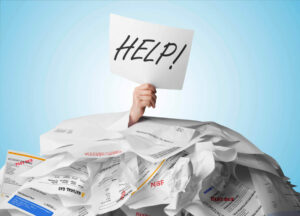And more importantly, how do you decide which debt to pay last if money is tight?

We all do it. When money gets tight, you sit down to decide what you absolutely must pay and what can wait. You let this bill slide for a month to make sure that these bills get paid on time. With a careful juggling act, you can keep everything up until your situation improves.
But when you have to juggle bills, do you know that you are juggling the right way? A new study conducted by TransUnion finds people have some interesting repayment priorities when it comes to debt.
“It is quite surprising to us that, for most struggling consumers, unsecured personal loan payments are prioritized over other prominent credit products, such as mortgages and auto loans,” said Ezra Becker, Senior Vice President and Head of Research for TranUnion.
At the end of 2016, here is what consumer delinquency rates looked like:
Why pay unsecured personal loans first?
It’s a little counterintuitive to pay an unsecured personal loan first:
- If it’s unsecured, it means there’s no collateral to lose by not paying. For instance, if you don’t pay your car loan, they can take your car.
- Default would be no worse on a personal loan for your credit than default on any other type of loan.
So, why then do so many people opt to pay personal loans first? The TransUnion experts believe it comes down to the perspective of getting an easy win.
“The prioritization of personal loan payments above all others is counterintuitive,” Becker admits. “We believe the relatively short duration of those loans, usually less than 30 months, is a key factor in the decision process.”
Basically, you pay what you think you can reasonably eliminate first. Unsecured personal loan terms average 28 months, while auto loans average 60 and mortgages average 230. Trying to pay off a bigger debt can seem daunting. Borrowers may opt to pay something that seems feasible, rather than concentrating where there is the most risk.
The two most important factors in deciding which debt to pay first
“When it comes to prioritizing debt, you have to take the emotion out of it and focus on the facts,” said Gary Herman, President of Consolidated Credit. “Comfort or convenience don’t matter as much as risk and cost. Those are the two factors that really deserve your focus.”
#1: Risk
Anytime you can lose something if you don’t pay a debt, it deserves more attention. Being in a place where you can default on a personal loan is bad, but it’s nothing compared to the threat of foreclosure. In the first case, here is the worst case that can happen:
- Nonpayment will damage your credit; the longer the debt goes unpaid, the worse the damage will be.
- A creditor can sue you in civil court to recoup the balance; this can lead to things like wage garnishment.
HOWEVER, if you have a loan that’s secured with collateral, it’s even worse. The credit damage still happens, but instead of suing you the lender can simply take the collateral. That could mean care repossession or the start of a foreclosure action.
So, while you may not be able to pay your mortgage or auto loan off first, you should always pay the bills first.
#2: Cost
“Debt with higher interest rates cost more money over time,” Herman explains. “If you have two $1,000 debts – one loan at 7% APR and one credit card at 22% APR – pay off the high-APR debt first. It’s more cost effective.”
With that in mind, it doesn’t make sense that credit cards tend to have the higher delinquency rate. Missed payments would have the same credit impact and the same risk of civil suits and collections. It essentially means you should really pay the personal loan last.